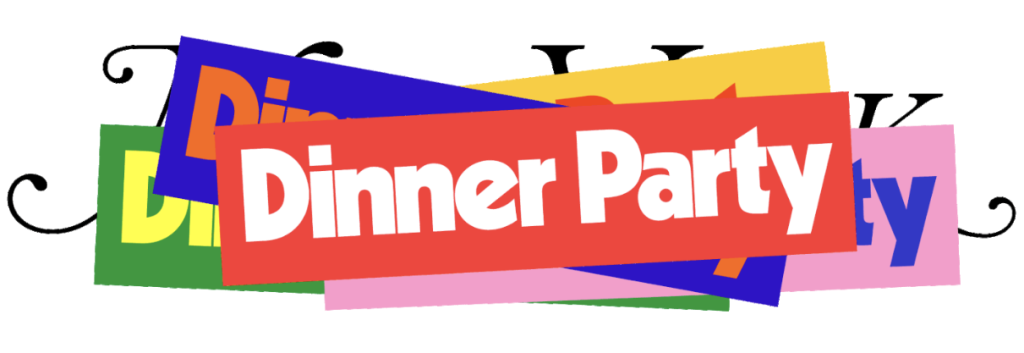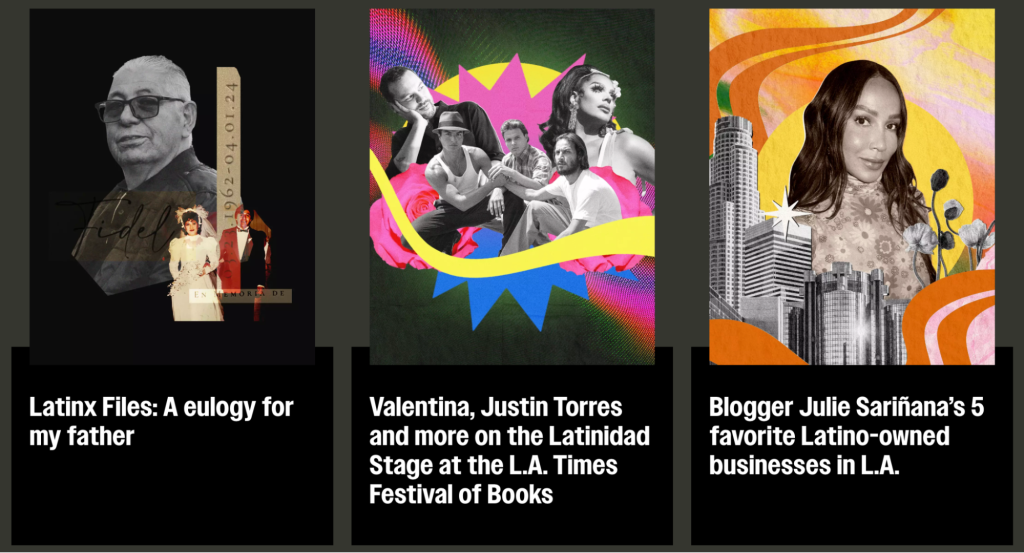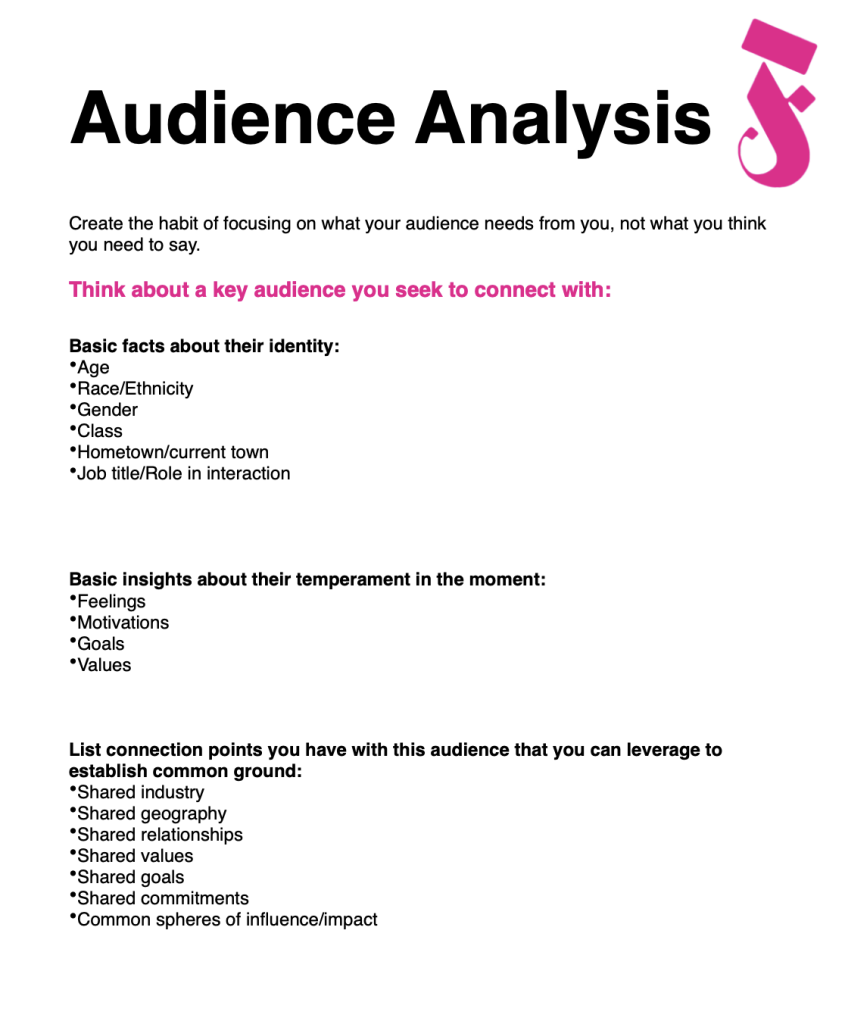
More than 700 audience members listen as Megan Finnerty and Kaila White emcee a show of true, personal stories on stage at The Van Buren in downtown Phoenix as a celebration as part of the Arizona Storytellers Project show in 2019. Photo: The Arizona Republic
Understanding our communities to better shape our coverage of them
Practical tips on utilizing lived experiences to build trust and relationships
The views expressed in this column are those of the author and do not necessarily reflect the views of the Reynolds Journalism Institute or the University of Missouri.
As journalists we pride ourselves on not leading our audiences to one conclusion or another. We focus on objectivity, on including points of view from all sides, on laying out the facts while avoiding bias.
But our most important job is really one of persuasion.
We have to persuade people to care. To engage with an issue, an idea, a problem or an opportunity, And then, beyond that, to sometimes act to solve the problem themselves, to hold the powerful accountable, to vote, to learn more, and so on.
I’ve come to think of this issue as the following question: How to ensure my story can be received by a diverse audience in the spirit in which it is intended?
Stories, unlike talks, exist only in relationship to their audience. Sure, some bloviators tell the same story to any number of audiences, but those tales are, at that point, essentially talks. Real stories are tailored to the audience, the moment and the medium, with adjustments in language, tone, structure and point as the audience changes. Talks, in contrast, are relatively static, using consistent words, structure and arguments and ideas, whether delivered as a monologue, part of a panel presentation or a live conversation.
And for so long, our journalism has been, essentially, talks — omniscient, “objective” stories purporting to capture the truth as both knowable, and universally understandable in one form, one focus or point of view. But as we center our audience teams, our user data, and our community listening efforts, we are better able to tailor our work to the needs and values of our audiences.
These ways of understanding our audiences and shaping our stories can be applied to any medium.
Step 1: Know your audience
Pre-writing, pre-reporting, checklist
Informed by the work of the Maynard Institute and the coaching of my mentor, Liz Warren, the founder of the South Mountain Community College Storytelling Institute, I developed this checklist for you to utilize. It invites storytellers, in any medium, to see their audience fully so they can start to imagine what the audience needs to hear, and not what they think they need to say.
The point of this is to see your potential reader, listener or watcher more fully and to anticipate their attitudes about both you, and your message.
Step 2: Know your medium
When we get into a newsroom, often people default to old habits or areas of proficiency, and sometimes just to the next big fad, and they just tell the story in that medium. But to really meet audiences where they are, we have to meet them on the mediums they prefer, AND the mediums that are most effective at telling the story we have at hand. To do this, we all will have to become even marginally proficient in multiple mediums. And we will have to learn to collaborate with those who are proficient in the mediums we aspire to use.
The issue is, so many journalists are either fearful of this or too egocentric to humble themselves in front of learning a new medium. Hanna Rosin wrote movingly about the power of going from writing for Slate to podcasting for NPR and how enriching it was to learn something new, to be sorta bad at something and work hard to get better at it in mid-career.
Journalists need to understand the pros and cons, the cognitive and emotional responses that each medium inspires. This can be done with checklists, or basic research, or expert training. We can know, even as we experiment with Chat GPT and text-to-video, what mediums are best for what kinds of information, and what audience responses/reactions are likely to be inspired by those mediums.
So consider what story you want to tell. Think about who the audience is and what mediums they prefer. Where do they already go? Meet them there. Then think about the tone of the story, the elements and the point of it. Start matching those things up, and figure out if you’ve got the tools or the skills, or if you need to ask for some help.
For inspiration, consider:
- How Borderless Magazine uses comics to tell personal stories.
- How Phoenix’s public radio station KJZZ uses a simple form to collect listener questions and report out conversational explainers.
- How Vox uses videos on YouTube to explain… everything.
- How The Arizona Republic used The Storytellers Project live and virtual events to empower communities to tell their own stories.
- How Houston Landing uses emojis and blurbs to highlight things to do in an accessible way on Instagram.
- How The Tennessean uses a simple landing page to make skimmable their mayoral election guide. No fancy navigation or illustrations, just intuitive layout and simple writing.
- How Baltimore Banner’s Krishna Sharma uses pure charisma and social videos to connect with audiences.
Step 3: Choose your vibe
Just like there is the right medium for certain messages, there is a better vibe (style or tone) for certain messages, depending on the audience you seek to reach and the impact you seek to have.
If you want to help sophisticated, busy urbanites, and those who aspire to be them, navigate the news, you launch the Dinner Party newsletter from New York Magazine, a personal favorite that has a gossipy, intense writing style filled with self disclosures, jokes and opinionated asides in the delicious way magazines used to be.

If you’re like the LA Time’s De Los project and you want to help Los Angelinos of hispanic descent to see themselves reflected in your journalism by celebrating their culture, you create a strong visual language that draws from the very neighborhoods you write about, with lots of illustrations, bold fonts and colors.

If you want to help everyday people, as well as industry insiders, understand the online platforms that shape our lives, you launch Platformer as an unadorned newsletter with a conversational tone and deeply reported, heavily contextual writing by Casey Newton, and Zoë Schiffer.
And great news for local journalists: our communities have vibes. They have points of view. They have ways of talking and ways of seeing things and values systems that are specific and unique! (Perhaps the best example of all time is Texas Monthly.) The magic of choosing a writing, visual and speaking style that reflects the community you’re part of is that audiences LIKE this. People like those who sound and look like themselves! Hiring people who authentically represent the speech, aesthetics, culture, ideas and values of the communities we cover, and allowing them to communicate in a way that reflects this is a path toward building affinity with various local audiences.
When people can communicate using the language, references, styles and intonations that are reflective of their lived experiences, they are more likely to be received as credible and trustworthy by all audiences, not just audiences who are like them.
When people can communicate using the language, references, styles and intonations that are reflective of their lived experiences, they are more likely to be received as credible and trustworthy by all audiences, not just audiences who are like them. To fully understand a person’s lived experience, it helps to hear it in their own words, expressed in their own style. The framing, the vocabulary, what is included, what is left out, what is emphasized and what is a throwaway line, all these things are subtext, context, and they help the audience better understand the full story and its meaning.
Step 4: Now, start making choices in narrative construction
It is a storytelling truism that if you can get people to laugh at the top of a story, you can get them to feel anything later on. The idea is that we can get audiences to receive the hard parts of the story once we’ve built a shared world, or established a shared set of values. See Hannah Gadsby’s breakout special Nanette for this.
Some basic questions to ask yourself when you consider how you can win people over:
- Can you make someone laugh, or feel charmed or good at the start of a story? This New York Times Magazine piece on gaming streaming algorithms is funny throughout.
- This is why so many stories about hard things start with approachable vignettes, or humorous ideas and clever writing.
- Can you help someone see themselves in the story immediately by speaking to a universal experience? This story on cancer-causing hair relaxers from Capital B speaks to childhood desire to feel pretty.
- This is why so many stories about healthcare or economic inequality start with small parenting or childhood moments.
- Or it can be immigration stories reminding readers that paths taken by some grandparents are no longer open.
- Can you help someone see themselves in the story immediately by speaking to a universal value? Most everything Eli Saslow does illustrates this, and the Washington Post has the biggest archive.
- This is why especially good stories about complex ideas or issues start with basic truths people agree on: We all want to be healthy. We want to work fairly and contribute. We all want our kids to have opportunities. We all want good food and clean water, etc.
- Can the story celebrate part of the audience’s identity in a way they find affirming? This heartbreaking profile from Texas Monthly celebrates DIY entertainment and Texan bravado.
- This is why solutions journalism stories are often written from an angle that assumes the best of the audience, appealing to the better angels of our nature, as opposed to framing things as fundamentally doomed.
- It’s why profiles, features and all kinds of stories start by capturing something appealing, magical and special about a place, a people, a food or a moment.
The big takeaway from this is that you have to make real choices prior to writing or creating any kind of content to ensure your work has the best chance of being received, and you can tailor them to any story, any event, any issue, any project. And if you want help, reach out! I’m at meganmfinnerty@gmail.com.
Cite this article
Finnerty, Megan (2024, May 8). Understanding our communities to better shape our coverage of them. Reynolds Journalism Institute. Retrieved from: https://rjionline.org/news/understanding-our-communities-to-better-shape-our-coverage-of-them/


Comments